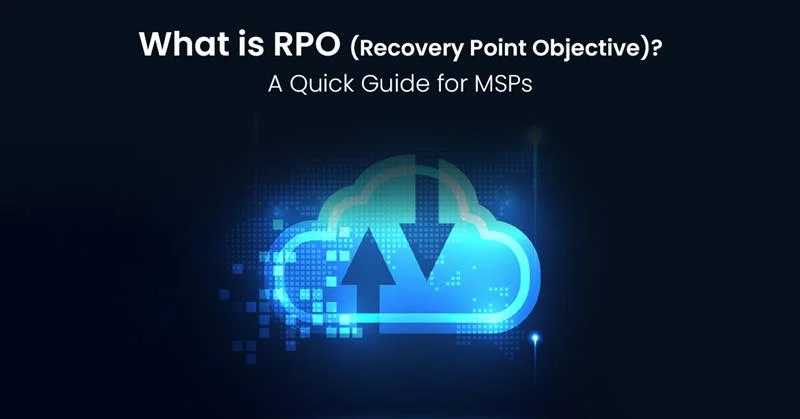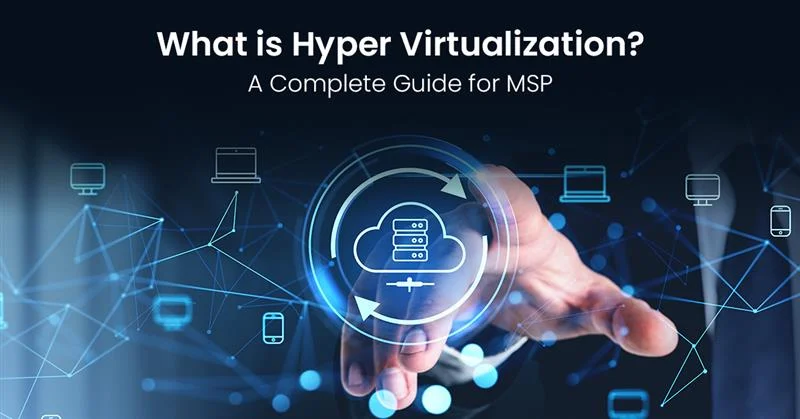Data loss isn’t a question of if, but when. Your clients are one ransomware attack, one hardware failure, or one human error away from losing everything. Here’s the uncomfortable truth: understanding recovery point objective is the difference between a recoverable incident and a business-ending disaster. If you’re an MSP still guessing how much data your clients can afford to lose, you’re playing Russian roulette with their survival. That’s where recovery point objective comes in, and why NOC Services for MSP have become critical for maintaining client trust and delivering real protection.
What is Recovery Point Objective (RPO)? Understanding the Basics
Let’s strip away the jargon and get real about what recovery point objective actually means.
Defining Recovery Point Objective in Simple Terms
Recovery point objective is the maximum amount of data your client can afford to lose, measured in time. Think of it as the answer to this question: “If disaster strikes right now, how far back can we roll the clock before the damage becomes unacceptable?”
If your client’s RPO is one hour, that means your backup strategy must capture data at least every 60 minutes. Lose more than an hour of data, and you’ve failed to meet their recovery point objective. It’s that straightforward.
Here’s why recovery point objective matters more than most MSPs realize:
- It drives your entire backup strategy: Your backup frequency, technology choices, and infrastructure investments all flow from the recovery point objective
- It’s measurable and testable: Unlike vague promises about “good backups,” RPO gives you a concrete target
- It connects to real business impact: Every minute of lost data translates to lost transactions, lost productivity, and potentially lost customers
The recovery point objective isn’t just an IT metric. It’s a business continuity decision that determines how much revenue, customer data, and operational capacity your client can afford to sacrifice during disaster recovery.
Why Recovery Point Objective Matters for Your MSP Clients
Here’s a stat that should wake you up: according to research, 93% of companies that experience prolonged data loss (lasting 10 days or more) go bankrupt within the following year. That’s not a typo. Nearly every business that can’t recover from extended data loss simply ceases to exist.
Your clients don’t care about your technical excuses. They care about survival. When you properly define and meet their recovery point objective, you’re not just backing up files. You’re protecting their ability to stay in business.
Consider these real-world impacts:
- Financial services: Every lost transaction is real money gone forever
- Healthcare providers: Lost patient records create compliance nightmares and patient safety risks
- E-commerce businesses: Lost orders and inventory data directly hit the bottom line
- Legal firms: Missing billable hours and case documents destroy client relationships
The tighter the recovery point objective, the less data gets lost when disaster strikes. But tighter RPO requirements also mean more frequent backups, more sophisticated technology, and higher costs. That’s the balance MSPs need to help clients navigate.
How Does Recovery Point Objective Work in Disaster Recovery?
Recovery point objective doesn’t exist in isolation. It’s part of your complete disaster recovery framework.
The Mechanics of RPO in Backup Strategy
Think of recovery point objective as your backup schedule’s governing principle. If a client has a four-hour RPO, you absolutely cannot run backups only once per day. The math doesn’t work. Your backup frequency must match or exceed the recovery point objective requirement.
Here’s how it breaks down:
- RPO of 24 hours = Daily backups minimum
- RPO of 4 hours = Backups every 4 hours or more frequently
- RPO of 1 hour = Hourly backups or continuous data protection
- RPO near zero = Real-time replication or snapshots every few minutes
Your backup strategy technology must support whatever recovery point objective you promise. Traditional daily backups simply cannot deliver a one-hour RPO. You need more advanced solutions like continuous data protection, frequent snapshots, or real-time replication.
RPO vs RTO: Understanding the Critical Difference
Let’s clear up confusion between two metrics that MSPs constantly mix up: recovery point objective and Recovery Time Objective (RTO).
Recovery Point Objective (RPO) answers: “How much data can we afford to lose?”
Recovery Time Objective (RTO) answers: “How long can we afford to be down?”
These are completely different questions addressing different aspects of disaster recovery:
- RPO measures data loss in terms of time: “We lost the last two hours of transactions”
- RTO measures downtime: “We were offline for six hours”
You need both metrics for effective business continuity planning. A client might have a one-hour RPO (can’t lose more than an hour of data) but a four-hour RTO (can tolerate being down for four hours). Or they might need near-zero RPO but can handle 24 hours of downtime while you restore systems.
Don’t confuse these metrics when talking to clients. They measure different things and require different IT recovery solutions.
What Are the Different RPO Tiers for MSP Continuity?
Not every application needs the same recovery point objective. Smart MSPs segment their clients’ data based on criticality.
Categorizing Client Data by Recovery Point Objective Requirements
Here’s a practical framework for tiering recovery point objective requirements:
Tier 1 (Near-Zero to 1 Hour RPO)
- Mission-critical financial systems
- Real-time transaction processing
- Customer-facing e-commerce platforms
- Medical records and patient care systems
- Live communication tools
Tier 2 (1-4 Hours RPO)
- Core business applications
- Customer relationship management systems
- Operational databases
- Email and collaboration platforms
Tier 3 (4-24 Hours RPO)
- Standard file shares
- Employee records and HR systems
- Internal documentation
- Marketing and sales materials
Tier 4 (24+ Hours RPO)
- Archival data
- Historical records
- Compliance documentation
- Static reference materials
The beauty of tiered recovery point objective is cost efficiency. You’re not over-protecting data that doesn’t need frequent backups, and you’re not under-protecting data that could sink the business if lost.
Industry-Specific RPO Considerations for IT Recovery
Different industries face unique recovery point objective challenges driven by compliance, customer expectations, and operational realities:
- Healthcare: HIPAA compliance often demands tight recovery point objective for patient records, typically one to four hours maximum. Lost patient data isn’t just expensive, it’s potentially life-threatening.
- Financial Services: Transaction data may require near-zero RPO. Every lost transaction is real money and potential regulatory violation.
- Legal: Client files and case documents typically need four to 24-hour RPO, but discovery documents may have stricter requirements.
- Retail and E-commerce: Point-of-sale and inventory systems often need one to four-hour RPO to prevent revenue loss and customer frustration.
Understanding industry-specific recovery point objective requirements helps you design backup strategies that actually match your clients’ real risks.
How to Calculate and Set Recovery Point Objective for Your Clients
Setting recovery point objective isn’t guesswork. It requires structured analysis and honest client conversations.
Step-by-Step Process for Determining Optimal RPO
Follow this process to establish realistic recovery point objective targets:
- Conduct Business Impact Analysis (BIA):Identify which systems and data are truly critical. What happens if each system goes down for an hour? A day? A week?
- Identify critical applications and data: Not everything is equally important. Separate mission-critical from nice-to-have.
- Calculate data change frequency: How often does data actually change? High-velocity data needs tighter recovery point objective.
- Assess financial impact of data loss: What does one hour of lost transactions cost? What about four hours? This quantifies the recovery point objective decision.
- Balance cost versus risk tolerance: Tighter recovery point objective costs more. Help clients understand the tradeoff between protection and budget.
- Set appropriate backup intervals: Your backup frequency must support the recovery point objective, or you’re making promises you can’t keep.
Key Questions for Defining Your Backup Strategy
Ask your clients these questions to nail down their actual recovery point objective requirements:
- How frequently does your critical data change?
- What’s the maximum amount of data loss your business can survive?
- What compliance or regulatory requirements govern your data protection?
- What budget can you allocate to disaster recovery and backup strategy?
- How quickly must operations resume after an incident?
- What are the consequences if we can’t meet the recovery point objective target?
Honest answers to these questions reveal the real recovery point objective requirements, not the wishful thinking version.
What Technologies Support Different Recovery Point Objectives?
Your recovery point objective promise is only as good as the technology backing it up.
Backup Solutions for Various RPO Requirements
Match your technology to the recovery point objective tier:
- Traditional Full Backups (24+ Hour RPO): Daily or weekly full backups work for archival data and low-priority systems. Cheap but limited.
- Incremental Backups (4-24 Hour RPO): Capture only changed data between full backups. More frequent protection without massive storage requirements.
- Snapshots (1-4 Hour RPO): Point-in-time copies of data volumes, typically hourly. Fast to create and restore.
- Continuous Data Protection (< 1 Hour RPO): Captures every change in near-real-time. Provides recovery points as granular as minutes or seconds.
- Replication (Near-Zero RPO): Real-time or near-real-time copying to secondary systems. Delivers the tightest recovery point objective but costs more.
Modern Technologies Enhancing MSP Continuity
Today’s recovery point objective solutions go beyond simple backups:
- Cloud-based disaster recovery platforms: Scalable, cost-effective protection with flexible recovery point objective options
- Automated backup orchestration: Eliminates human error from backup scheduling
- Immutable backups: Ransomware-proof snapshots that attackers can’t encrypt or delete
- Multi-site replication: Geographic redundancy ensures recovery point objective even during site failures
The right technology mix depends entirely on your client’s recovery point objective requirements and budget. Don’t over-engineer solutions for data that doesn’t need tight RPO, and don’t under-invest in mission-critical systems.
Common Recovery Point Objective Challenges MSPs Face
Even with the best plans, MSPs hit obstacles when implementing recovery point objective strategies.
Overcoming RPO Implementation Obstacles
Here are the most common problems and how to solve them:
- Budget Constraints: Clients want near-zero recovery point objective but won’t pay for it. Solution: Show them the actual cost of data loss versus the cost of protection. IBM’s research found the average cost of a data breach is $4.9 million, making even expensive disaster recovery look cheap by comparison.
- Managing Multiple RPO Tiers: Juggling different recovery point objective requirements across dozens of clients gets complex. Solution: Standardize your offerings into clear tiers with defined technology and pricing.
- Client Education: Many clients don’t understand what recovery point objective means or why it matters. Solution: Use real-world examples and financial impact calculations to make it concrete.
- Testing and Validation: Backups that don’t work are worthless. Solution: Regular testing ensures you can actually meet the recovery point objective you’ve promised.
- Compliance Requirements: Regulatory frameworks often mandate specific recovery point objective capabilities. Solution: Understand industry-specific requirements and build them into your standard offerings.
The MSPs who succeed with recovery point objective don’t wing it. They have documented processes, clear client communications, and regular testing protocols.
Strengthen Your MSP’s Business Continuity with IT By Design’s NOC Service
Setting the right recovery point objective is just the start. Your clients need continuous monitoring and rapid response to ensure their disaster recovery plans actually work when disasters strike.
Why Your MSP Needs Professional NOC Services for Complete IT Recovery
Here’s the problem most MSPs face: you’ve defined recovery point objective targets, implemented backup technologies, and documented procedures. But who’s watching to make sure backups actually complete? Who catches the failed job at 3 AM before it becomes a compliance violation? Who ensures your backup strategy consistently meets the recovery point objective you promised?
That’s exactly where IT By Design’s NOC Service transforms your MSP continuity offering.
Our NOC Service delivers:
- 24/7/365 proactive monitoring that catches backup failures before they compromise your recovery point objective
- Automated alert management ensuring every missed backup window triggers immediate investigation
- Expert technicians who understand disaster recovery and respond instantly to backup issues
- Comprehensive reporting documenting backup success rates and recovery point objective compliance
- Multi-client dashboard providing complete visibility into backup strategy performance across your portfolio
Stop worrying whether your clients’ data is actually protected. Stop losing sleep over missed backups that destroy your recovery point objective commitments. IT By Design’s NOC Service ensures your disaster recovery promises aren’t just documentation; they’re guaranteed protection.
Ready to deliver bulletproof MSP continuity?
Contact IT By Design today and discover how our NOC Service helps you maintain recovery point objective targets across every client, every backup window, every single day. Your clients deserve business continuity they can count on; let us help you deliver that confidence.
Frequently Asked Questions about RPO
Q: What is the difference between RPO and RTO?
Recovery point objective (RPO) measures acceptable data loss in time, while Recovery Time Objective (RTO) measures acceptable downtime; RPO answers “how much data can we lose” and RTO answers “how long can we be down.”
Q: What is a good recovery point objective?
A good recovery point objective depends on business criticality; mission-critical systems need 0-1 hour, important applications need 1-4 hours, and standard systems can often accept 4-24 hours or more.
Q: How do you calculate RPO?
Calculate RPO by assessing data change frequency, financial impact of loss, compliance requirements, and balancing protection costs against data loss risks; the RPO should match your backup interval.
Q: Can RPO be zero?
True zero RPO is nearly impossible, but near-zero (seconds to minutes) is achievable using continuous data protection or synchronous replication, though it requires significant technology investment.
Q: How does RPO relate to business continuity planning?
Recovery point objective is foundational to business continuity because it defines acceptable data loss and drives backup frequency, technology choices, and disaster recovery procedures.








